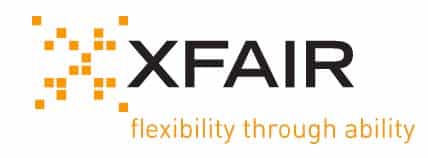How many people are currently working on the mobile applications and the web based solutions? What are the biggest challenges working in such an international team and do you consider code as your common language?
Well this is a really interesting question, because I had to think about this. A mobile application is not just requiring a mobile app developer. Mobile applications, certainly the ones we have, interact with a database. Which requires web services to be developed to interact between the app and the database. This web service is written by a web developer. So if we have to write a new module for one of our apps it doesn’t just require a mobile app developer, it requires an EMS-developer, because that’s the name of our software, or a C-Sharp developer, because that’s the language the code is written in for the web base. Therefore, it’s very difficult to put it as ‘what is your mobile development team and what is your web application development team’.
Within our team, we have our iOS developer who comes from an only iOS background so does only iOS developing. Our android developer comes from a web background and therefor has the ability to develop the android app as well as the web services. So they can do both whereas our iOS development cannot. But me, and two other web developers within our team can write web services. So when you say ‘Oh, we have a new requirement for the mobile app’ it will not only require one or two people, the iOS and Android developers, it could also require a web developer as part of the project. We are all one team providing one core functionality, which is to make event software for our customers. This team consists of seven people. There’s myself, four senior developers, one junior developer and one software tester. Of those four senior developers, we have one android, one iOS and two for the C-sharp development, which I myself work with as well.
The biggest challenge for me has not anything to do with the team members. It’s balancing the requirements of the customers with those of the business for our roadmap, as I mentioned earlier. The international team concept – again interesting, but the common language is not code. This is something slightly different, because there are many code languages. I, for example, would not be able to fully understand the iOS Code, because I’m not an iOS developer. I would certainly be able to read some of it, but of course not all of it. All code regardless of whether it is iOS or the android (JAVA or Kotlin), our web services (C-Sharp), or the database (SQL) are different languages. All these languages are written in English.
The challenging part for me is to ensure that the code is written to a certain standard and for it to be readable and understandable to another developer, which means that code needs to be commented correctly. That is why one of our internal processes and development standards that we have, is that all comments within the code are written in English because all developers speak it regardless of where they are from. Developers in general have to be able to speak English because of that fact. It’s not because the code is one language, as there are many different code types and many different languages within the code and a person who knows one language doesn’t know another language. It’s the same with spoken language. The common denominator is the fact that when writing the code, you write English.
The management of the international team isn’t really an issue. Of course there will be conflicts between different people, but these conflicts can also exist between people of the same nationality. It’s very much the case of English is the common language, this is how we develop.
Are you interested in becoming a part of the XFAIR development team and help create innovative and flexible solutions for our customers? Then please don’t hesitate to contact us via our application form – we’re looking forward to hearing from you!






